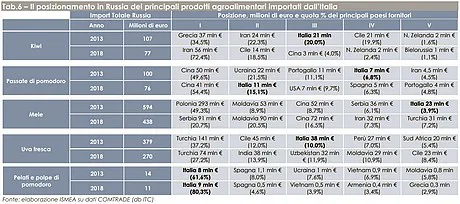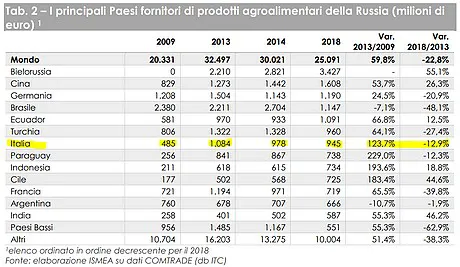In 2013, Russian imports of Italian produce grew by 124% compared to 2009, but the Russian ban put at end to it all.
The Ismea analysis performed using COMTRADE (db ITC) data is clear: the economic loss for Italian produce exports after the start of the Russian ban is of €217 million. Fresh fruit alone lost €112 million.
For a few key sectors such as fresh fruit, Italian exports dropped and products such as grapes, apples, kiwifruits and peaches were heavily penalized.
These products are often connected to particular areas - Trentino Alto Adige (apples), Emilia Romagna (peaches), Puglia (grapes) and Lazio (kiwifruit) - for which the economic damage is even greater.
Despite the fact that the EU now has a weaker role on the Russian market, in 2018 Italy ranked 7th among the global suppliers of food and agricultural products with a turnover of €945 million. Within the EU, thanks to the increase in the export of products not subjected to the ban, Italy has strengthened its position on this market, going from fifth to the second place right behind Germany.
The loss of turnover from the products subjected to the ban was then partially compensated by the growth in other sectors. The Italian products that have managed to maintain a positive performance after 2014 were: tomato sauces and concentrates (€11 million, 1.2% of the total) and tomato pulp and peeled tomatoes (€9 million, 1% of the total).
For further information: www.ismea.it


